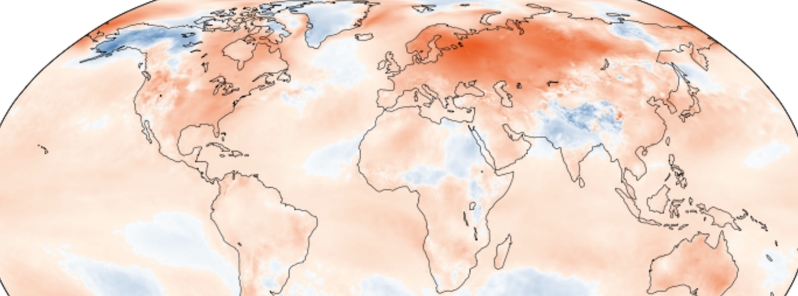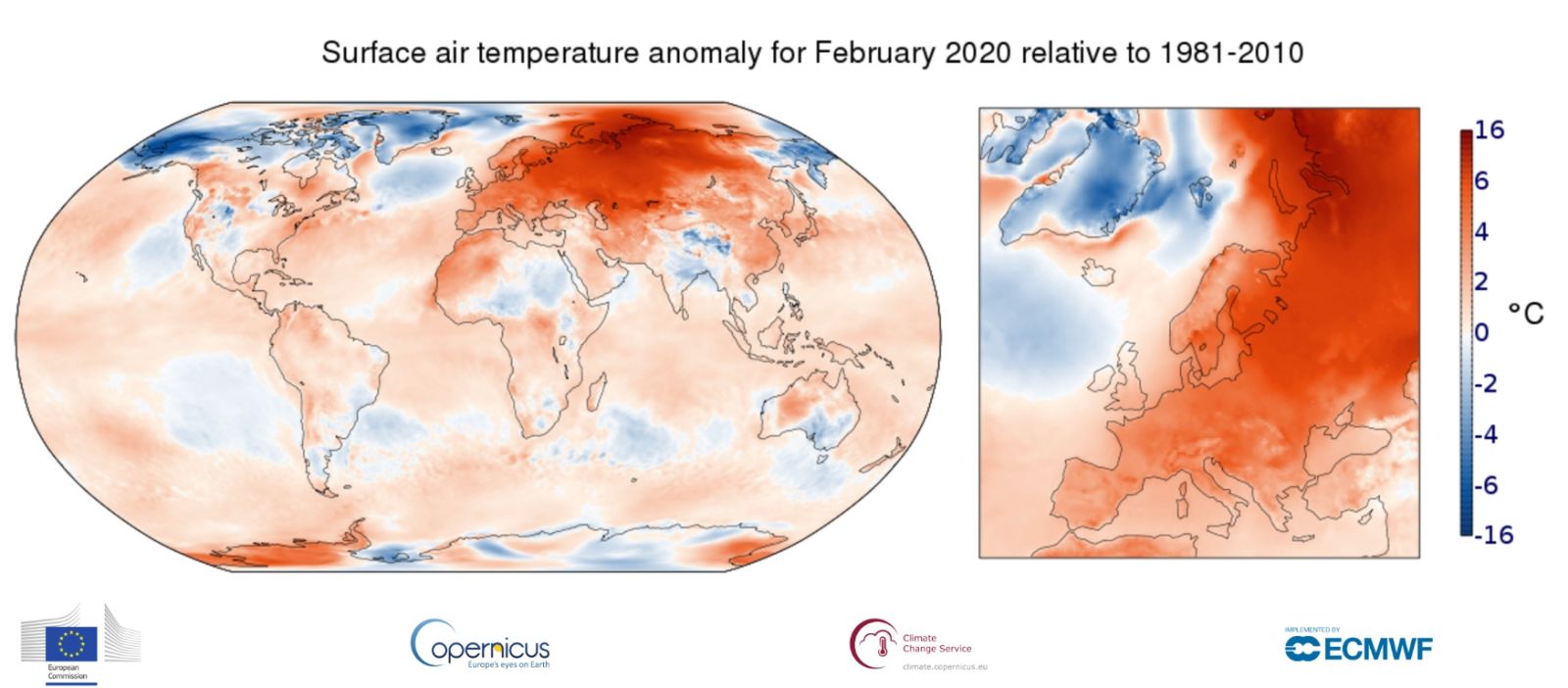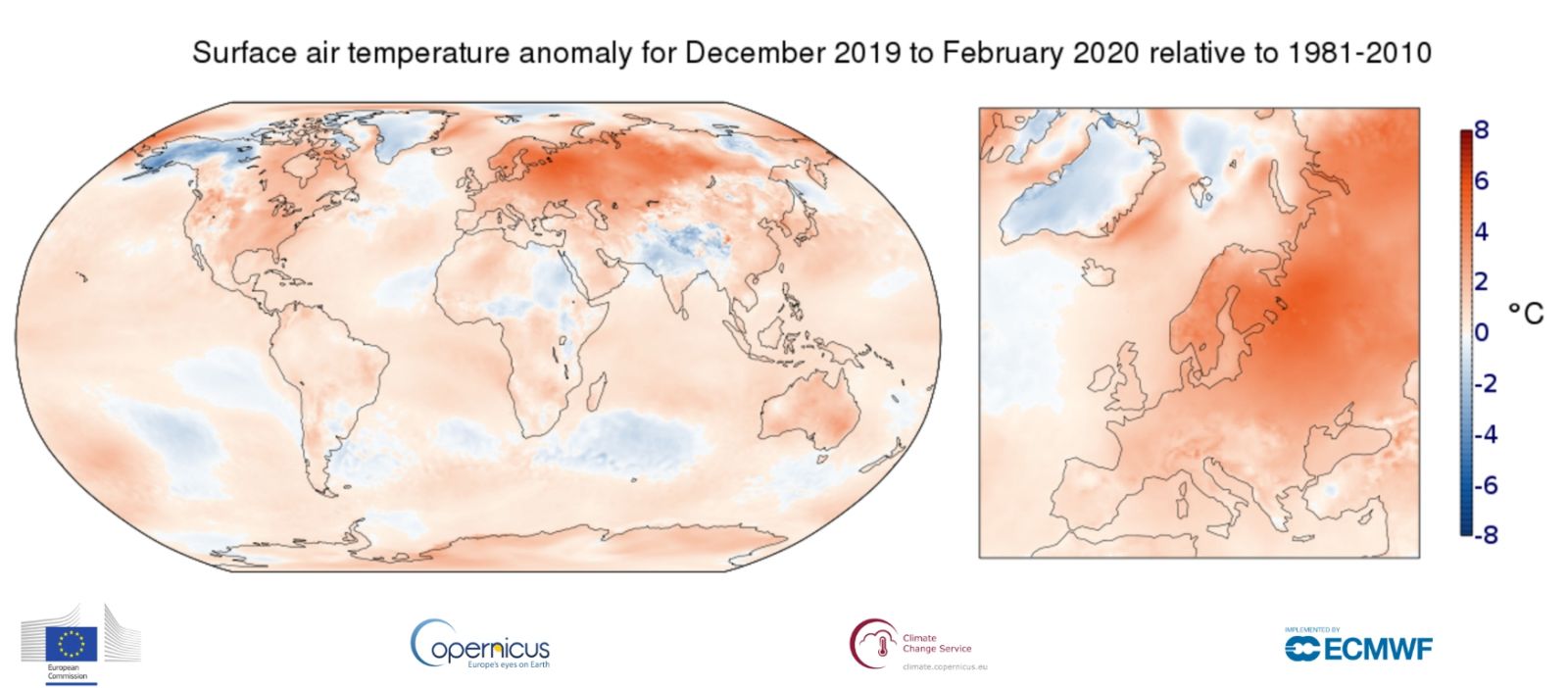C3S: Europe records warmest winter since 1855 when records began

The 2019/20 winter season in Europe was the continent's warmest winter since records began in 1855, according to the Copernicus Climate Service's bulletin released on March 5, 2020. Last month was also the second warmest February, not only for Europe but also globally. "1924/25 was similarly warm, with a couple of degrees above the climate at that time… They are unusual but they are part of the natural variability," said Carlo Buontempo, director of Copernicus Climate Change Service (C3S).
From the beginning of December to the end of February, there had been persistent mild weather over Europe, particularly in the northern and eastern areas.
The average temperature was 3.4 °C (6.1 °F) higher than the usual temperature from 1981 to 2010, and 1.4 °C (2.5 °F) greater than the previous record set during the 2015/16 winter season.
"Compared to previous winters, this has been unusually warm," Buontempo said. "We see this variation from year to year, especially in the tropics, but this really stands out as being a very remarkable and very warm, mild winter for Europe."
"1924-25 was similarly warm, with a couple of degrees above the climate at that time. So you can have a couple of degrees variation above the baseline and you can expect to have some of those every 50-100 years. They are unusual but they are part of the natural variability," said Buontempo.
"I see climate having an impact on almost all our activities but when you see these large anomalies then you really understand first hand what this means," Buontempo stated.
"The failed ice wine season in Germany, the incredibly warm winter in Russia and Finland and some parts of Northern Europe, the impact on Reindeer herding for example because of the warm temperatures."

Last month was also the second warmest February for Europe and globally, while the top spot was set in 1990. February 2020 was 0.8 °C (1.4 °F) warmer than the average of February from 1981 to 2010.
It was just around 0.1 °C (0.2 °F) cooler than in 2016 and 0.1 °C (0.2 °F) warmer than in 2017.
"They were extremely high for the time of year in the east, in a region extending southward from southern Finland to northern Ukraine and eastward over Russia," the bulletin said.
On the other hand, Copernicus also noted that above-average temperatures were not only confined to Europe, but also to other continents and countries.
"Other regions that were quite substantially warmer than average include north-western Africa, Iran, Afghanistan, and Central Asia, and much of China, with smaller pockets in North and South America, central and southern Africa and Western Australia," they stated on the website.
Buontempo said global warming was not solely the reason as winter temperature changes yearly, "but it is likely that this type of events were made more extreme by the global warming trend."
"Seeing such a warm winter is disconcerting, but does not represent a climate trend as such. Seasonal temperatures, especially outside the tropics vary significantly from year to year. Part of our work is to compare climate data dating back to the pre-industrial era to ascertain long-term climate trends. With C3S data, individuals, institutions and policy makers can make informed decisions based on the evolving climate temperatures.”

Featured image credit: C3S

Magnetic North Pole is located at the deepest point of the Nakarov basin~ – 4000m (-13.250 feet) just before de LOMONOSOV ridge
Magnetic South Pole actual at – 3,250m (-10,660 feet)
This is the shortest known magnetic north-south axis since more than 400 years.